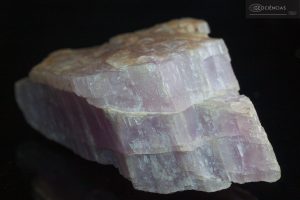The growing commercialization of electric cars, smartphones and other electronic devices strongly drives the increase in demand for Lithium, an indispensable substance in the production of rechargeable batteries.
In this scenario, lithium is considered a strategic metal around the world and the search for new reserves has become increasingly recurrent. The element is the lowest density of the group of metals and also the most electropositive. Its abundance in the Earth's crust is relatively low, at only 12 ppb (part per billion).
Throughout this text, the main sources, applications, world and national reserves, main producers and the current economic context of lithium will be presented.
Lithium Sources
Lithium can be found in different minerals. However, spodumene, lepidolite, petalite, amblygonite and montebrasite are considered more economically viable for exploitation. In this sense, the predominant sources are spodumene and lepidolite.




The occurrence of these minerals occurs mainly in granitic pegmatites and brines. In the first case, pegmatites are igneous rocks with coarse grain size, formed from waste fluids enriched in rare elements. Pegmatites are composed mainly of feldspar, quartz and mica, with the presence of other minerals in smaller quantities, such as tourmaline, garnet, pertitic microcline, beryl and spodumene.
In addition to granitic pegmatites, lithium can also be extracted from brines. In this type of occurrence, environments are commonly dry with high rates of water evaporation, allowing the formation of brines in which evaporitic minerals are also formed, with enrichment of contained elements (Mg, Na, K, Li, I, B).
In Brazil, the main sources of lithium are granitic pegmatites. On a global scale, there are high concentrations of lithium in the desert brines of California, Nevada and Utah. Other important deposits are the brines of the Atacama Desert (Chile), the Salar Uyuni Salt Desert (Bolivia), Argentina (Salar del Hombre Muerto, El Rincon), Tibet (Lake Zabuye), and the People's Republic of China (Qinghai Basin).
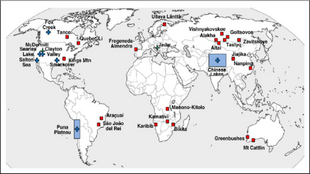
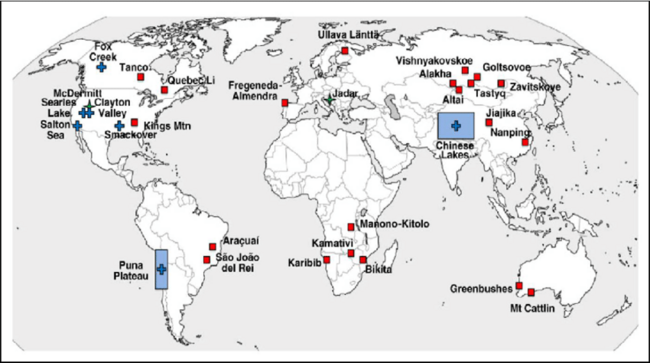


Lithium Applications
The main ways in which lithium is used industrially are lithium hydroxide (LiOH) and lithium carbonate (Li2CO3) (Braga & França 2013). Both have several applications. Check out its main uses below:
- Batteries and accumulators:
One of the main applications of lithium is in the production of batteries, in which various lithium salts are used as electrolytes in primary batteries.
Lithium batteries require low or no maintenance fees, require no exercise (deliberate complete discharge) to keep them in good shape, have a long lifespan, high energy density, and other advantages.
Currently, these batteries are widely used in the manufacture of electric cars. In 2021, according to the International Energy Agency report, 6.6 million electric cars were sold. This number corresponds to more than double the sales recorded in 2020.

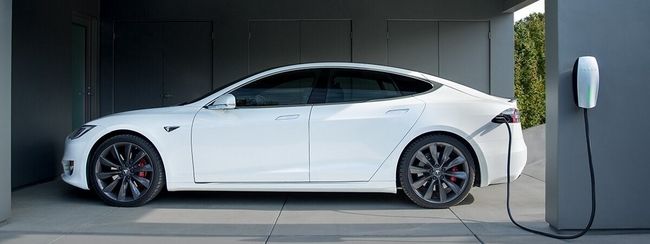


- Greases and Lubricants:
For the production of greases and lubricants, lithium hydroxide is used. One of the benefits provided by the use of metal is that the grease has a high resistance to humidity and high temperature. In this way, this type of grease is fully suitable for lubricating bearings of automobiles, aircraft, and heavy machinery.
- Ceramics and Glass:
The use of lithium in the production of ceramics and glass contributes to the improvement in chemical resistance, resistance to thermal shock and in the moldability conditions of the piece. An example of this are kinescope tubes for televisions and computer monitors that use lithium carbonate in their formulation.
Lithium has several other applications, such as in the aluminum electrolysis process, rubber and plastics production, industrial humidity control and air treatment, in addition to use by the pharmaceutical industry.
World reserves and main producers
According to data presented by the Summary of Mineral Commodities (2021), produced by the United States Geological Survey (USGS), the largest producers of Lithium in 2019, in tons, were:
[table id=6 /]
The USGS has also estimated the size of the lithium reserves that these countries have, as you can see in the table below:
[table id=9 /]
In this scenario, the identified lithium resources in Bolivia stand out. The U.S. Geological Survey estimated that the country has resources of up to 21 million tons of the metal, due to the Salar de Uyuni desert, which is home to 50% of the lithium present on the planet. However, Bolivia has not yet started the exploitation of the ore due to the low technical feasibility.
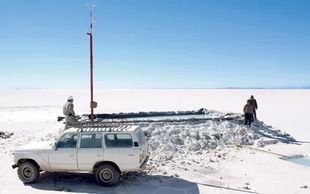
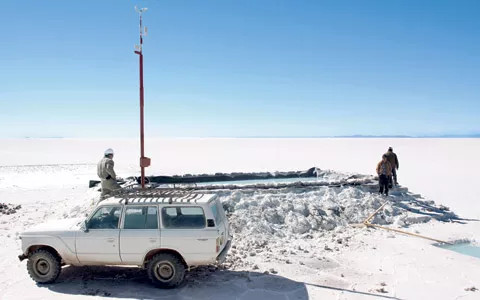


Brazilian reserves and production
Currently, according to a survey by the Brazilian Geological Survey (CPRM), Brazil holds 8% of the world's lithium reserves. Also according to data from the National Mining Agency (ANM), in 2020, Brazilian lithium production was 4,065.75 tons.
In Brazil, one of the country's main pegmatite provinces, the Eastern Brazilian Pegmatite Province , has 90% of its area located in the state of Minas Gerais, but also covers the states of Bahia, Espírito Santo and Rio de Janeiro. The figure below shows the distribution of areas with lithium deposits or occurrences in Minas Gerais:

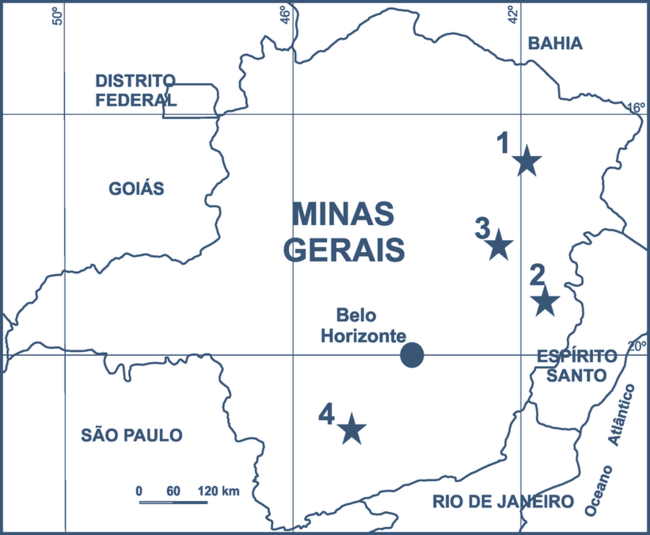


The Araçuaí Pegmatite District, in the Araçuaí/Itinga region, has one of the largest lithium deposits in the country, with a predominance of spodumene and petalite minerals. This region accounts for the majority of Brazilian lithium production. In the district, the ore is mined through underground mines.
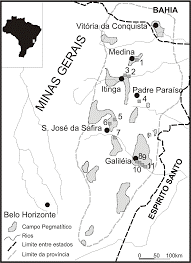



In the eastern region of Minas Gerais, the East Project, developed by CPRM, identified 811 occurrences of pegmatites distributed across 21 pegmatite fields that were grouped into 7 Pegmatite Districts, which are the municipalities of Governador Valadares, Santa Maria do Suaçuí, Galiléia, Conselheiro Pena, Resplendor, Divino das Laranjeiras and Mendes Pimentel. In the area, the pegmatites contain the minerals amblygonite, lepidolite and spodumene, from which lithium can be extracted.
Another region rich in pegmatites is the São João del Rei Pegmatite District , which covers the municipalities of Nazareno, São Tiago, Resende Costa, Conceição da Barra de Minas, São João del Rei, Ritápolis and Coronel Xavier Chaves. In research carried out by CPRM in 2018, four regions with geological potential for lithium were identified , located in the municipalities of São Tiago and Nazareno.
Furthermore, in the State of Ceará there are occurrences of pegmatite bodies in the Pegmatite District of Cristais-Russas , covering the municipalities of Cascavel, Aracoiaba, Russas and Morada Nova, and in the Pegmatite District of Solonópole-Quixeramobim (DPSQ) , which encompasses the municipalities of Solonópole, Quixadá, Milhã and Banabuiú. Other occurrences were identified in the districts of Parambu, Icó and Itapiúna. In this sense, the DPSQ presents the largest concentration of pegmatites with economic potential. However, the region is still in the research phase.
In 2021, only two holders, AMG Brasil SA and Companhia Brasileira de Lítio (CBL), paid CFEM – Financial Compensation for Mineral Exploration – related to the economic use of lithium in their respective territories. The total collected was R$5.5 million. Both mining companies concentrate their operations in Minas Gerais in the areas circled on the map below. The smaller and larger circles correspond to the areas mined by CBL and AMG, respectively.
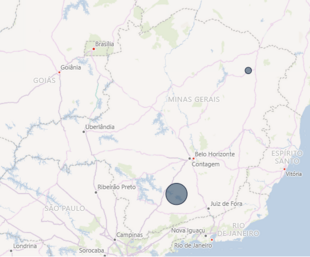
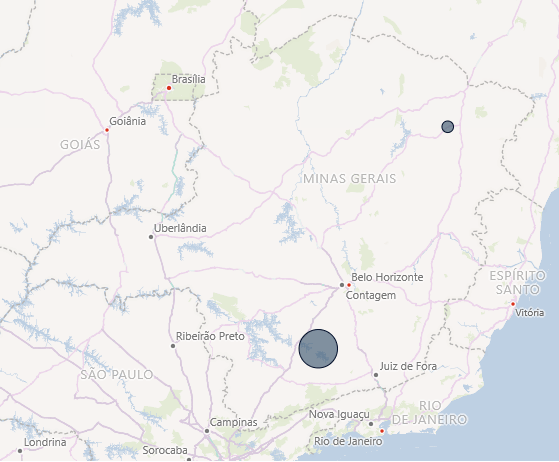


Current economic context of Lithium
The high demand for electric cars , driven by increased sales by Tesla and other automakers, directly influenced the increase in the price of Lithium due to its role in the production of batteries used in electric cars. According to the Notícias de Mineração portal, lithium was the best performing commodity in 2021. The price of the metal soared 477.42% in the year.
On May 6, 2022, the value of a ton of lithium carbonate, converted to dollars, was US $67,752.19. Check the chart below (in CNY – Yuan):
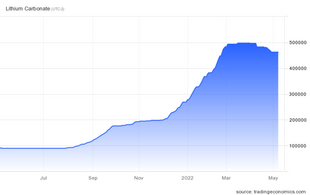
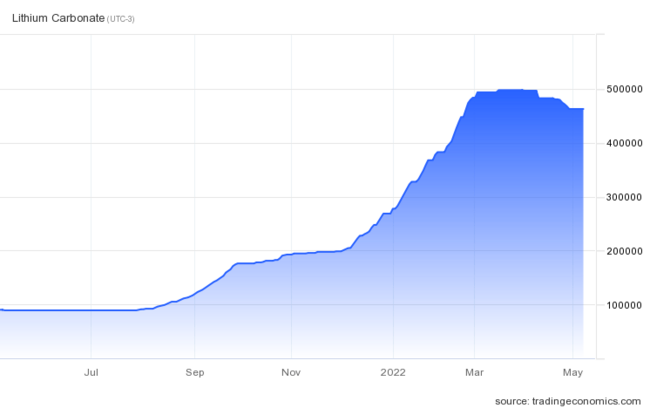


The largest lithium miner, Albemarle Corp, saw its shares jump 19% as lithium prices rose. Similarly, Livent, the third-largest lithium miner, doubled its earnings guidance for 2022.
However, one of the concerns in the industry is the shortage of lithium supply. This is because there are not many active projects to extract the metal and the initial investment to mine it is very high, taking years for the mine to become operational. Currently, there is no substitute for lithium in the manufacture of electric vehicle batteries, which makes it indispensable for this sector of the industry.
Did you like this text? Visit our blog for more content like this!
References
http://mineralis.cetem.gov.br/bitstream/cetem/1115/1/26.%20LITIO.pdf
http://recursomineralmg.codemge.com.br/substancias-minerais/litio/
http://repositorium.sdum.uminho.pt/handle/1822/64789
https://www.mining.com/web/good-times-are-ahead-for-lithium-miners-as-prices-continue-to-surge/
https://tradingeconomics.com/commodity/lithium
https://pubs.er.usgs.gov/publication/mcs2021
Brenda Costa Belchior Guimarães
Mining Engineering student at the Federal University of Minas Gerais and marketing intern at DMT.
brenda.belchiorg@dmt-group.com
